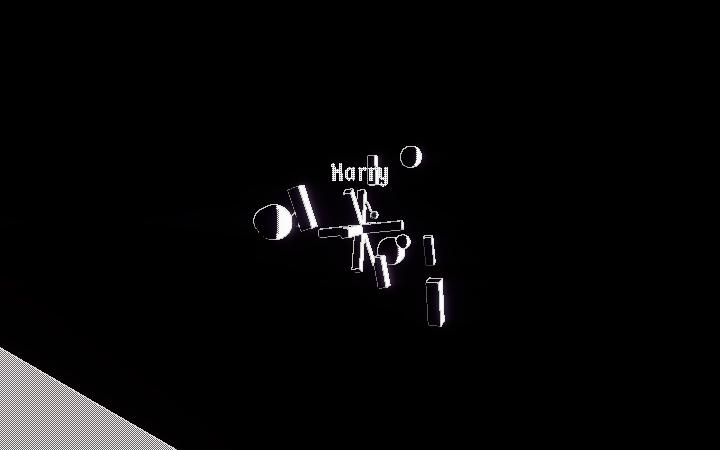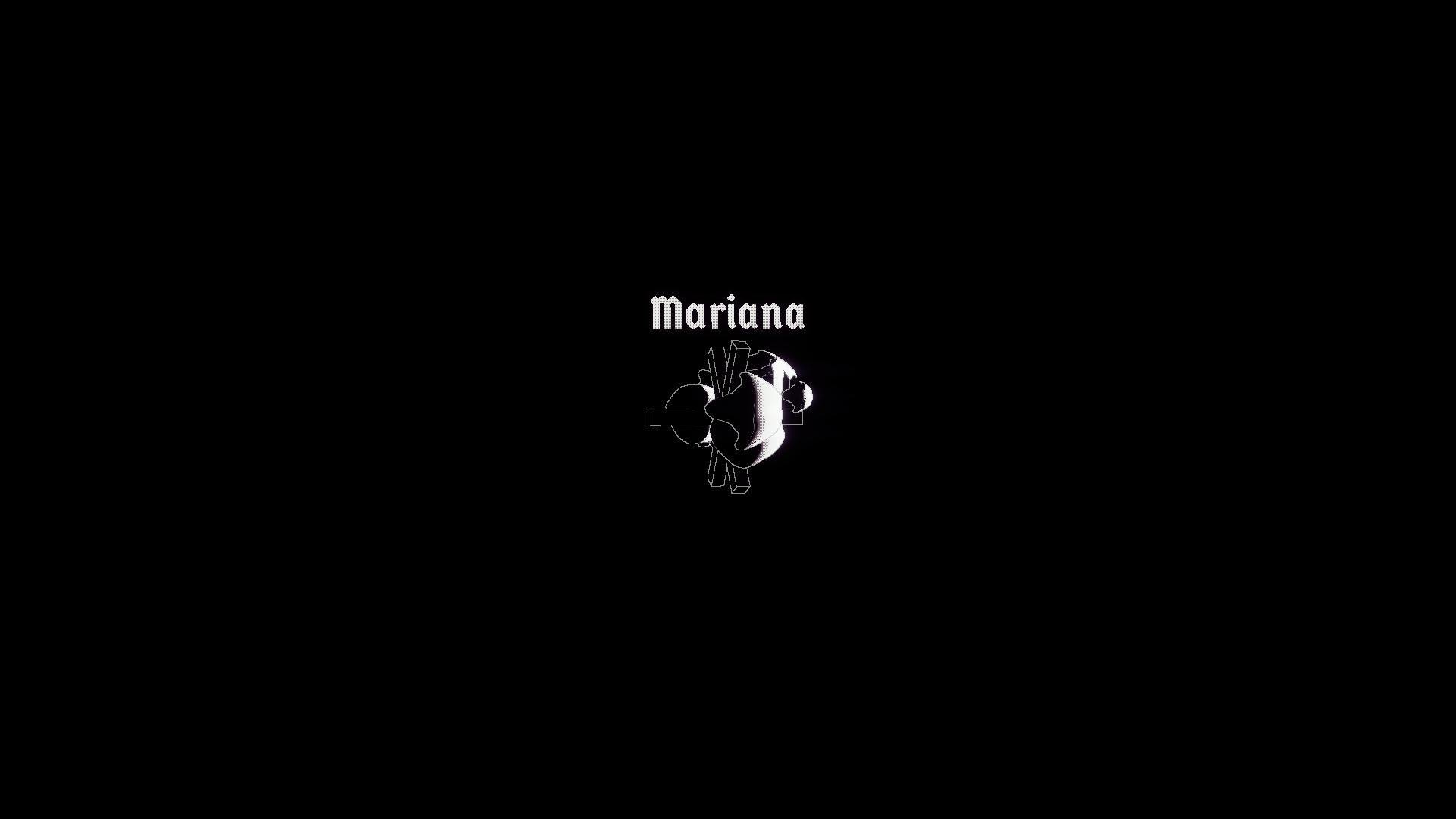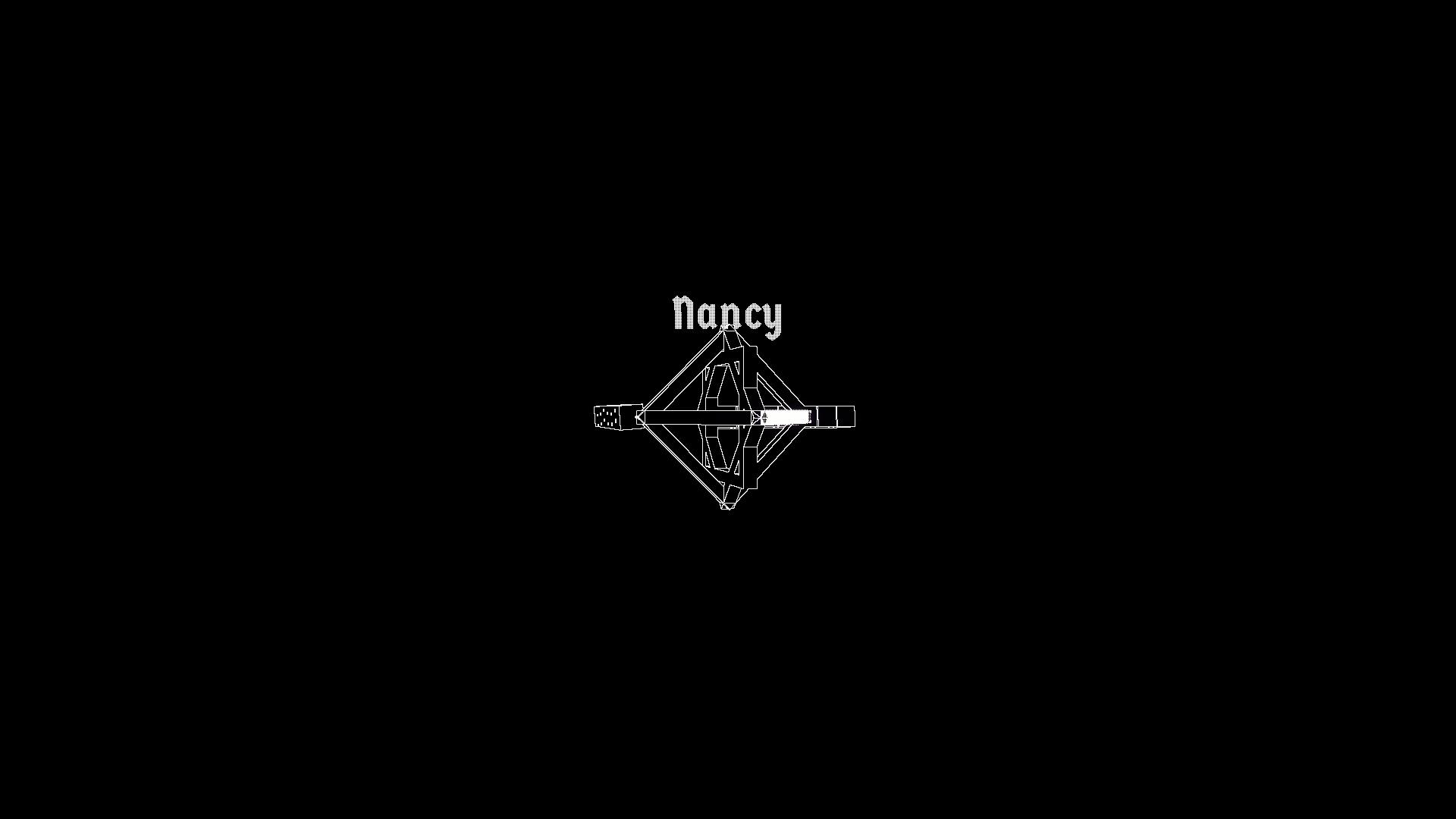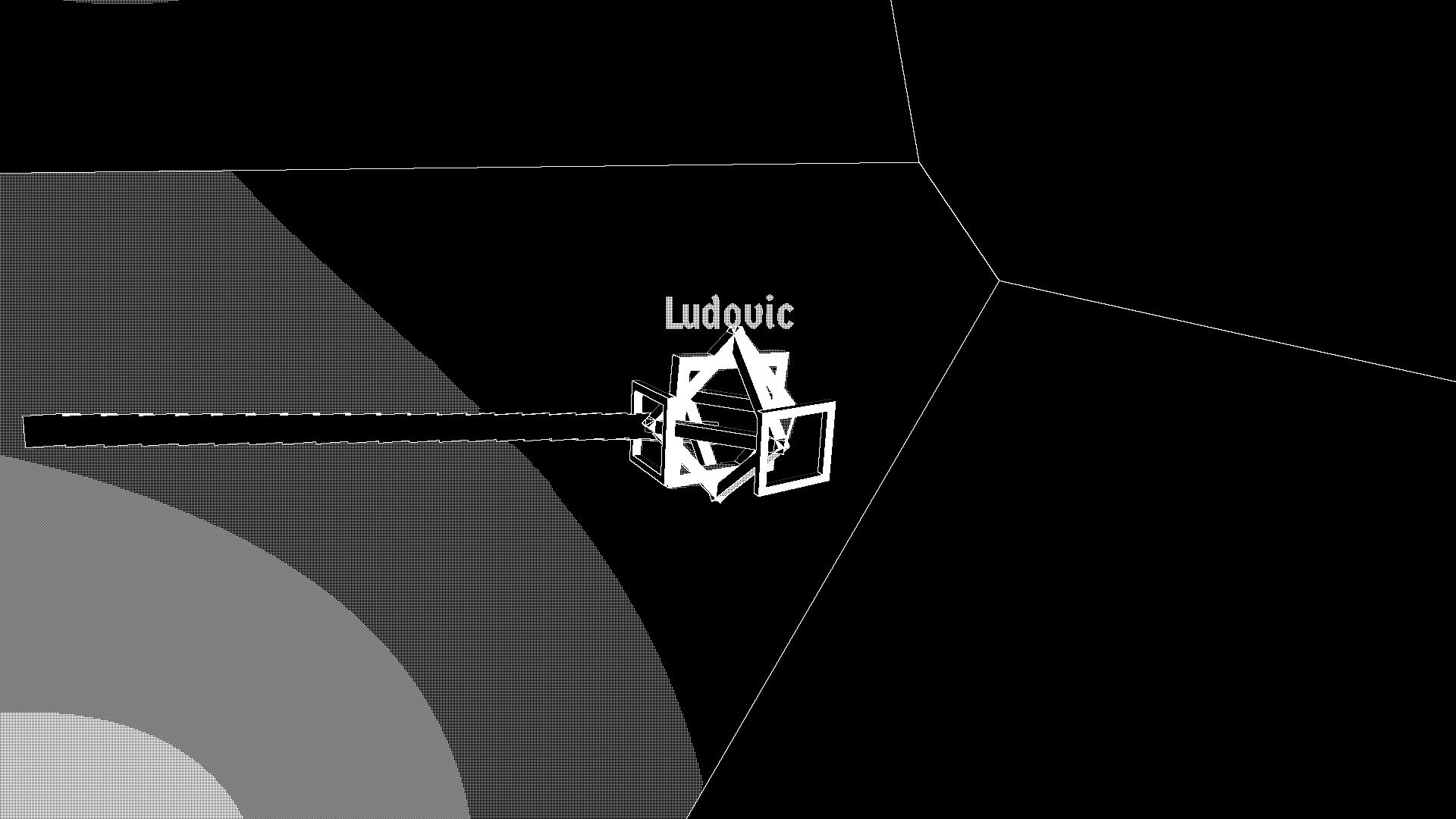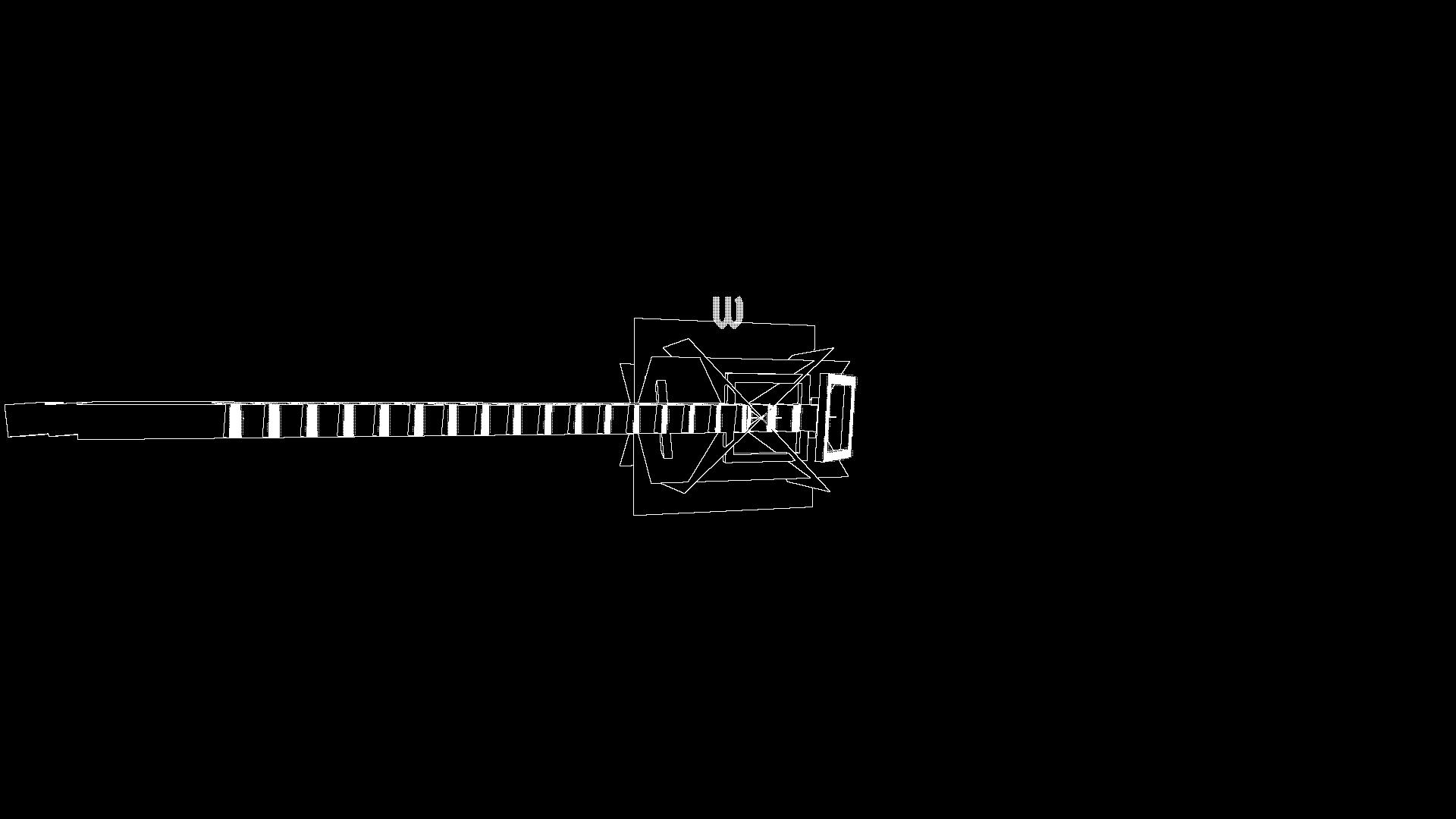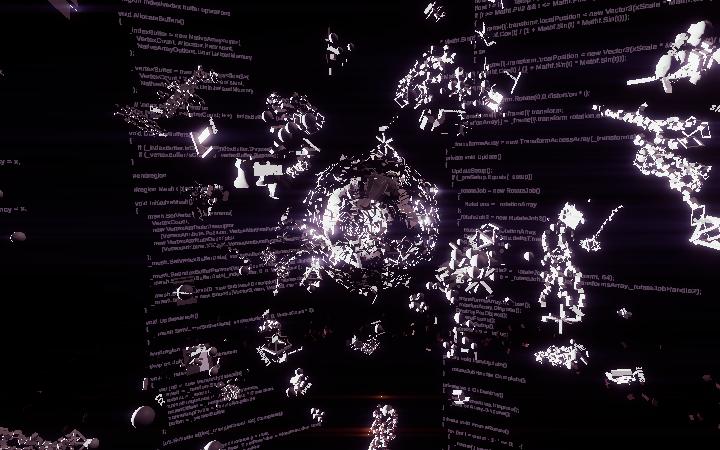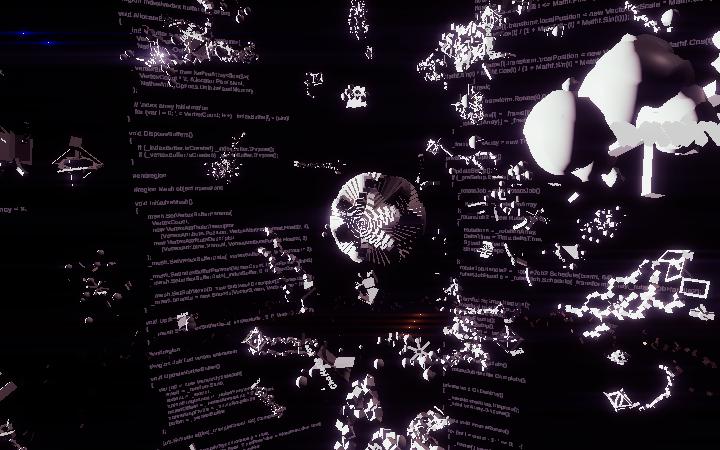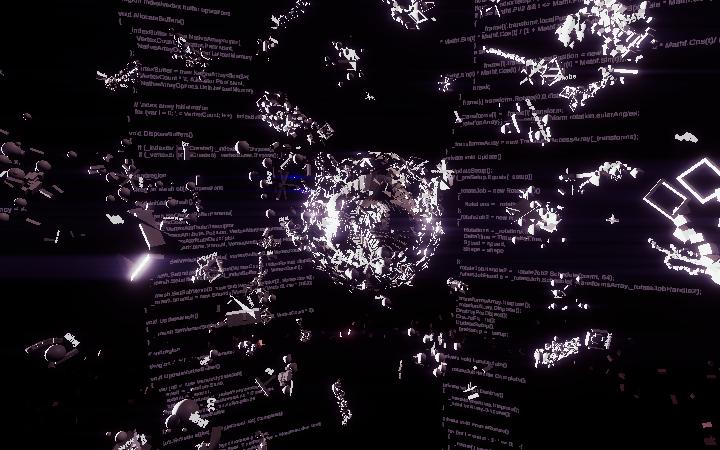SHA-BE
SHA-BE is a virtual creatures generator. It will will generate virtual creatures of different forms and behaviors in a virtual space according to the name given by the user.
produced by: Hankun Yu
Introduction
In this work, the user creeates a virtual creature by giving a name. The name is used to obtain a Hash value through a SHA256 algorithm, and based on this value a unique virtual creature is generated. The virtual creatures interact with each other in the process of collision and combine with each other to form the next generation of cirtual creatures. User use iPad to input a name and use VR devices to enter the virtual world.
Concept and background research
Through this work, I want to explore the self-evolution of the virtual world and the realtionship between data and humans in posthumanism. And I believe VR is an important doorway to post-human society.
Basically, I want to build a virtual world full of different virtual creatures, and I want to link these virtual creatures with people. So I came up with the idea of social media, which can be seen as a virtual world in which virtual characters are created by people by creating accounts. So in this work, I go through the names to generate different virtual creatures and link these creatures to the person who gave them the name. The little frame in this work is a window, a window between virtual world and physic world. User can use iPad to scan the frame to peer into the virtual world through this window and put on the VR device to enter the virtual world.
At the same time, these virtual creatures in this virtual world will not be controlled by people to self-evolve. They will generate a new individual by merging names and inherit some characteristics from the previous generation. Just like machine learning, which is widely used nowadays, we train a model to get a result that satisfies us, but we don't know what happens during this process of data transformation.I believe this will happen more and more in the future, where algorithms and data will iterate and evlove themselves in the virtual world. And our real world will be more and more closely connected to the virtual world.
The ideas of virtual creatures shapes was inspired by Karl Sims's Evolved Virtual Creatures(1994) and about the virtual creature self-evolution this point I refer to the game of Spores(EA 2008).
To discuss post-humanism through Virtual Reality is the main focus of my work. In my work I want to express not only the format of “transhumanism”, but also to give our bodies a virtual organ through Virtual Reality, so that we can gain a new perspective and rethink the relationship between human and technology.
What is 'post-human'? It may be considered as a viewpoint/perspective with the following hypothetical characteristics. ...... First, the post-human perspective values (informational) data forms and downplays (material) factual examples. Consequently, concrete images formed by biological substrates are seen as historical contingencies rather than life-giving necessities; secondly, the post-human perspective sees consciousness/conception as a mere contingent phenomenon, like a nouveau riche that is constantly developing and ascending, trying to exaggerate a secondary show into an entire performance. And the long Western tradition, before Descartes considered the ego to be the thinking mind, treated consciousness/concept as the center of personality (human identity); again, the post-human view holds that the human body turns out to be all prosthesis that we have to learn to manipulate, so that the use of another prosthesis to extend or replace the body becomes a continuous process, and that this process begins long before we are born. Finally, and most importantly, the post-human perspective arranges and shapes humans in one way or another so that they can be tightly linked to intelligent machines.
How We Became Posthuman, N. Katherine Hayles
Through the slightly obscure discourse, we have a vague sense of logic: the essence of the world is information rather than matter, as in molecular biology, the human body is seen as an expression of genetic information, and humans are essentially information patterns or information systems (e.g., money is an information pattern stored in a computer bank rather than real cash), and the shift from information bodies and cyber bodies to post-human body, which is a general trend. “If you think that the universe is made up of information in essence, that means that these ‘creatures’ in computer programs are ‘life’ because they have the ‘form’ of life ‘, i.e., the information code. As a result, the theoretical basis used to classify all types of life has undergone a major shift.” Virtual Reality for me is a small hole through which I can get a glimpse of the possibilities of post-humanity.
Technical
This project build with Unity 2022.2 beta, I used the iPad as the AR device and the Oculus Quest 2 as the VR device.
For the visual effects, I used High-Defined Render Pipeline, which gave the piece a great visual effect but was also very demanding on the device so I couldn't run the same effect on the iPad. For the black and white wireframe effect I used a post-processing plugin from Keijiro, Recolor.
As mentioned above, I used the SHA256 algorithm to generate virtual creatures from the names. The process was to generate a hash value from the names using the SHA256 algorithm, then convert the value to a hexadecimal integer, and then further convert the integer to decimal. At this point I get an integer of several tens of digits in length which is well outside the int range, so I split this number into several five digits and add these five digits to get an integer in the int range. The last step is to use this number as a random number seed to generate random virtual creatures and their behavior patterns.
To increase the speed of my work I used Unity's Entity Component System, which makes it easy to use multiple CPUs to achieve logical parallelism, a compact and contiguous memory layout, and a greater performance boost than Object-oriented programming. Because there are a large number of objects in the work, each with a different way of moving, ECS greatly increases the speed of the work and allows for more virtual creatures.
In the VR and AR section, I used AR Foundation and used image recognition and plane detection to build the AR app. oculus integration helped me build the VR app.
Future development
I want to convert this project into an online project and set up a server to run this work 24 hours a day. And add a Log system to record the life of each virtual creature created. He will become a virtual world parallel to the real world at a different time from the real world time flow.
Users can create a new virtual creature by logging in and entering its name, and see the life of the virtual creatures in another world through text and images.
Self evaluation
It was originally planned that the activity of virtual creatures in the virtual space could be seen simultaneously through AR on the iPad, but the iPad performance could not load this work.
Frame was supposed to serve as an important window between virtual space and real space, but it was overlooked by many people during the exhibition, which was my design flaw.
References
- https://github.com/keijiro?tab=repositories
- https://www.karlsims.com/evolved-virtual-creatures.html
- https://assetstore.unity.com/packages/tools/utilities/easy-save-the-complete-save-data-serialization-asset-768
- https://assetstore.unity.com/packages/tools/network/basic-wifi-local-multiplayer-137753
- https://assetstore.unity.com/packages/3d/gui/modular-3d-text-in-game-3d-ui-system-159508
- https://www.origin.com/gbr/zh-tw/store/spore/spore




































































